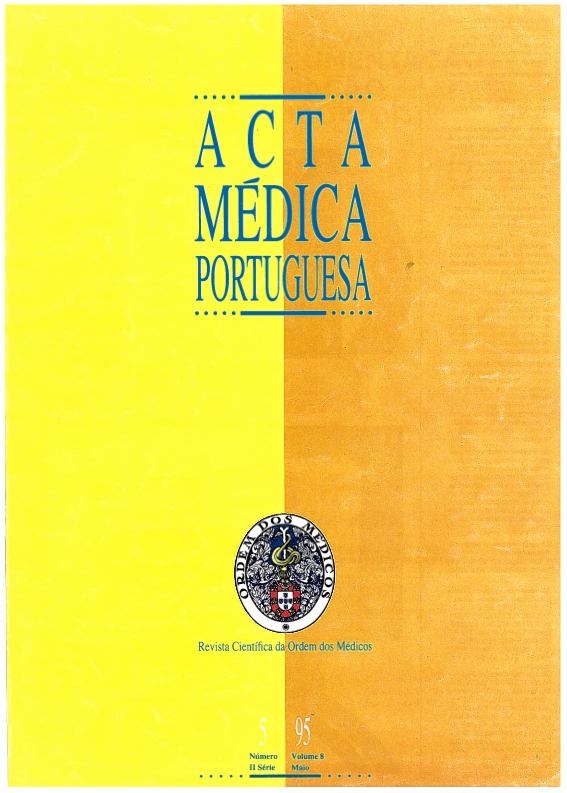Acute pancreatitis. An analysis of 91 consecutive cases (1988-1991) with a brief review of the literature).
DOI:
https://doi.org/10.20344/amp.2704Abstract
Acute pancreatitis (AP) remains a subject of great controversy from the standpoint of its aetiology, pathogeny and treatment. We present a study of 91 patients with AP consecutively admitted to a surgical ward. 50 Women and 41 men with a mean age of 59 +/- 19 years were treated. The aetiology of AP was attributed to gallstones in 54 patients, alcohol in 22, ERPC and trauma; in 14 patients the aetiology was considered idiopathic. The most frequent signs and symptoms were pain, vomiting, abdominal tenderness, jaundice and fever. The mean number of Ranson's prognostic criteria was 3 +/- 1.5 and 29 patients (31%) had more than three. Initial management was conservative in 84 patients (92.3%) and seven were operated on admission (acute abdomen in four, septic shock in two and common duct obstruction in another). Mortality rate was 11% (n = 10) and in 24 patients (26.3%) there were complications of AP. Most of the patients (80%) began oral feeding a week after admission. The mean number of Ranson's criteria of patients deceased was 5.4 +/- 1.6 and of those who survived was 2.8 +/- 1.3 (p < 0.001). Follow-up of patients allowed us to see that in five (5.5%) there was a relapse of AP.Downloads
Downloads
How to Cite
Issue
Section
License
All the articles published in the AMP are open access and comply with the requirements of funding agencies or academic institutions. The AMP is governed by the terms of the Creative Commons ‘Attribution – Non-Commercial Use - (CC-BY-NC)’ license, regarding the use by third parties.
It is the author’s responsibility to obtain approval for the reproduction of figures, tables, etc. from other publications.
Upon acceptance of an article for publication, the authors will be asked to complete the ICMJE “Copyright Liability and Copyright Sharing Statement “(http://www.actamedicaportuguesa.com/info/AMP-NormasPublicacao.pdf) and the “Declaration of Potential Conflicts of Interest” (http:// www.icmje.org/conflicts-of-interest). An e-mail will be sent to the corresponding author to acknowledge receipt of the manuscript.
After publication, the authors are authorised to make their articles available in repositories of their institutions of origin, as long as they always mention where they were published and according to the Creative Commons license.









